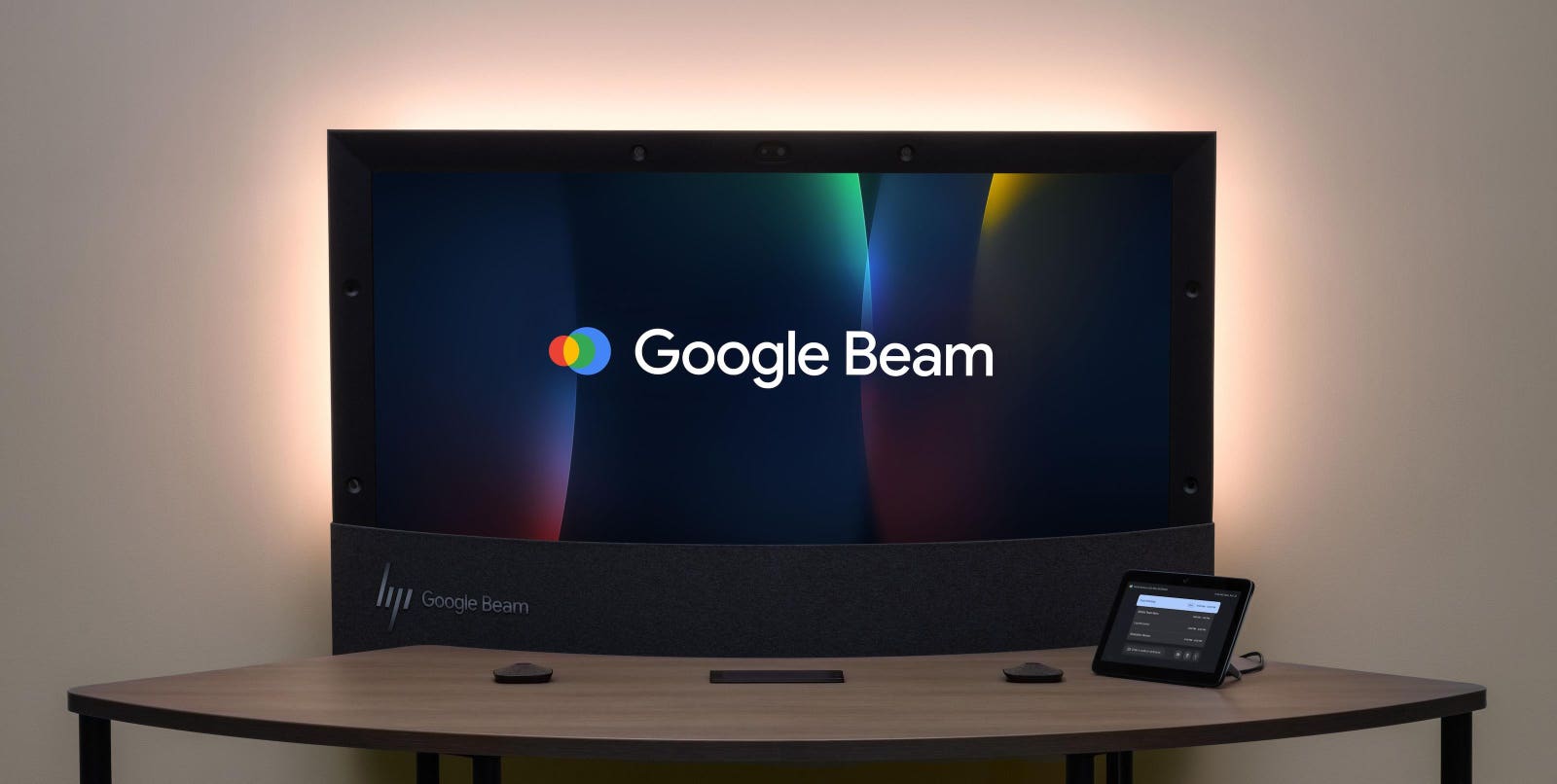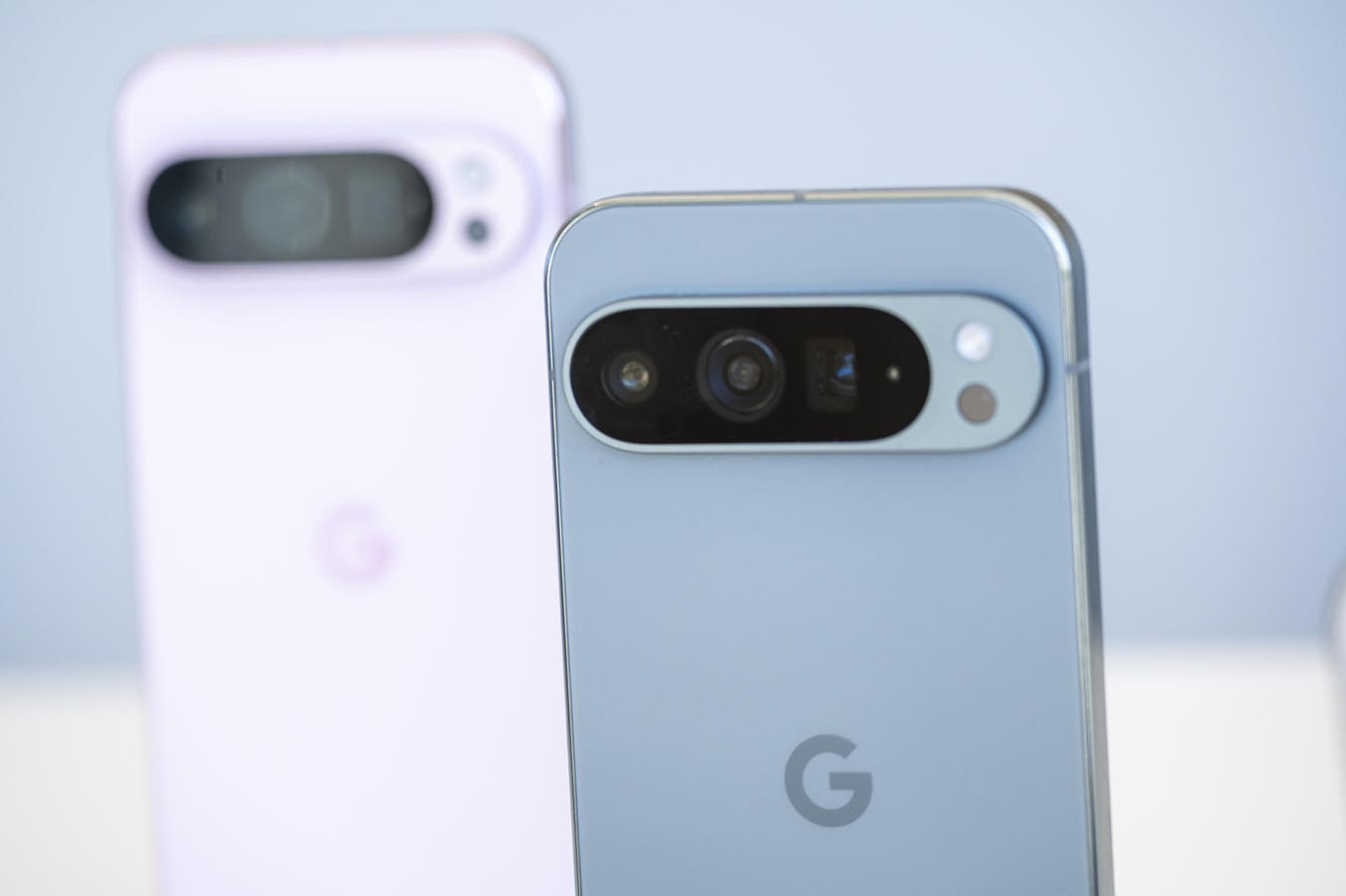HP Dimension with Google Beam
HP and Google have launched the HP Dimension with Google Beam, a 3-D video communication system designed to mimic the dynamics of in-person meetings without the need for headsets or wearables. Unveiled a couple of weeks ago at InfoComm 2025, the system builds on Google’s Project Starline, which my colleague Anshel Sag wrote about here. HP primarily designed it for small meeting environments to enhance virtual collaboration, touting it as having a unique sense of presence and spatial depth.
(Note that both Google and HP are advisory clients of my firm, Moor Insights & Strategy.)
HP Dimension With Google Beam — Specs And User Experience
The system features a 65-inch 8K light field display, six cameras, adaptive lighting and spatial audio. Despite incorporating these advanced components, the design minimizes visible technology. Greg Baribault, vice president of product and portfolio for the Hybrid Systems unit at HP, called this out during our Six Five On the Road video interview at InfoComm: “One of the beautiful things we did with the hardware was remove the technology. You see no technology.” Baribault explained that the 3-D rendering creates a natural spatial perception, making users feel as if they are behind the screen rather than experiencing uncomfortable pop-out 3-D effects. He emphasized that with “no cameras pointed at you,” the design promotes a “natural face-to-face conversation” without making users feel self-conscious.
During my experience trying out the HP Dimension at InfoComm, I was particularly impressed by the realism of the 3-D rendering and its remarkable ability to create a sense of shared space. It felt like I was sitting across the table from someone, conversing with eye contact and observing the person’s natural movements and the immediate objects around us.
Preliminary internal testing conducted by HP and Google supports the level of presence I felt. Their tests indicate that users’ interactions via the HP Dimension with Google Beam may significantly improve key communication metrics. Reported results show a 28% increase in recall of meeting details, up to 39% more non-verbal communication and at least a 14% increase in focus on conversation partners compared to traditional videoconferencing.
Meeting participants see each other in realistic 3-D using the HP Dimension with Google Beam.
Key Business Use Cases: High-Value Executive And Client Interactions
Given its capabilities and focus on immersive presence, the HP Dimension with Google Beam appears well-suited for high-value enterprise applications. For instance, I think it could offer significant value in executive leadership meetings, where non-verbal cues take on even more importance. It could also enhance critical client engagements by creating greater impact for high-stakes presentations. The system also supports specialized collaborative workflows like design reviews, where three-dimensional visualization can significantly aid problem-solving.
Beyond these business applications, the device’s enhanced sense of presence could prove invaluable in scenarios requiring deep personal connection across significant distances. For example, it could enable military personnel on deployment to experience more authentic interactions with their families back home.
The HP Dimension with Google Beam is designed for one-on-one interactions, but can also easily handle multi-participant meetings. It supports native Zoom Rooms and Google Meet, and is compatible with Microsoft Teams and Webex.
The Foundational Audio Experience
HP also announced its Poly Studio A2 Audio Solutions at InfoComm 2025, featuring them prominently in the Dimension demo. These solutions, comprising a versatile tabletop microphone setup and an audio bridge, can form a foundational element of the overall system. The microphones expand from one to eight units and connect to the bridge via standard wiring, allowing deployment in diverse room configurations.
The Poly Studio A2 microphones and audio bridge can be used with the Dimension system or other Poly video solutions, providing flexibility for organizations with different meeting room setups. The audio solution aims to ensure that high-quality audio complements the video and 3-D experience. I believe its versatility reinforces HP’s vision of “equity at the table so everyone can be heard,” as Baribault put it.
When discussing the role of audio, Baribault emphasized its critical importance in virtual meetings: “Voice is the most important part of any online meeting. You can usually tolerate a video drop here or there, but if you lose audio, you lose all the context of the discussion.” He also pointed out that distractions, such as the crinkling of a potato chip bag or someone typing loudly on their keyboard, can be highly disruptive for remote participants. To address these issues and ensure clear audio, HP has integrated AI technology in its microphones, audio bridge and video codecs to reduce noise and echo. Additionally, AI is used within management tools to help IT staff optimize audio quality.
Market Positioning And Investment
In a market increasingly saturated with standard videoconferencing tools, HP aims to carve out a premium segment by addressing the limitations of two-dimensional interactions. In this context, the Dimension system represents a notable advance in collaborative technology, offering a distinct solution for enterprises seeking to enhance virtual engagement beyond current capabilities. Platforms such as Cisco Spatial Meetings and VR-based competitors, including Fabrik and Assemblr, offer immersive 3-D spaces that enable teams to collaborate on designs, visualize digital assets and work together in shared environments. Cisco Spatial Meetings, when paired with Apple Vision Pro, can deliver life-like spatial video conferencing that mimics in-person presence. However, these solutions require specialized headsets or glasses, potentially limiting accessibility and complicating deployment.
The HP Dimension with Google Beam also represents a significant investment, given that it’s priced at $24,999 for the hardware, with the Google Beam license sold separately. However, its value could become apparent when considering executives who currently take many flights a year between company facilities for in-person meetings. In such scenarios, the system’s ability to replicate face-to-face interaction could justify the cost, save significant time and reduce environmental impact. Orders for the system open in June 2025, with shipments beginning in September to the U.S., Canada, the U.K., France, Germany and Japan.
Beyond The Demo: Driving Adoption
The technical innovation and potential for enhanced collaboration are clearly evident as soon as you use the HP Dimension with Google Beam. However, the most significant challenge for its makers could be achieving widespread adoption. Besides the initial investment, organizations would need to consider the practicalities of network bandwidth, data security and the like that arise when integrating such a specialized system into existing IT infrastructure.
Shifting established user habits and workflows to embrace this new virtual presence will also require strategic planning and effective change management. For HP to drive widespread adoption, getting target users — especially executives and IT decision makers — into a live demo will be crucial. The face-to-face impact of the system is its most compelling feature, and experiencing it firsthand will always be the most effective way to convey its potential.
Moor Insights & Strategy provides or has provided paid services to technology companies, like all tech industry research and analyst firms. These services include research, analysis, advising, consulting, benchmarking, acquisition matchmaking and video and speaking sponsorships. Of the companies mentioned in this article, Moor Insights & Strategy currently has (or has had) a paid business relationship with Cisco (Webex), Google, HP, Microsoft and Zoom.









